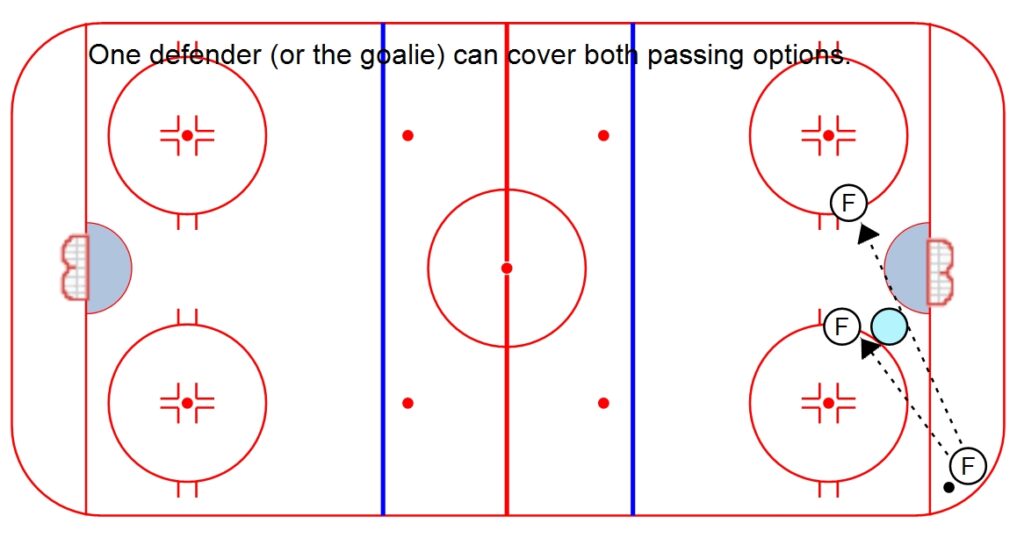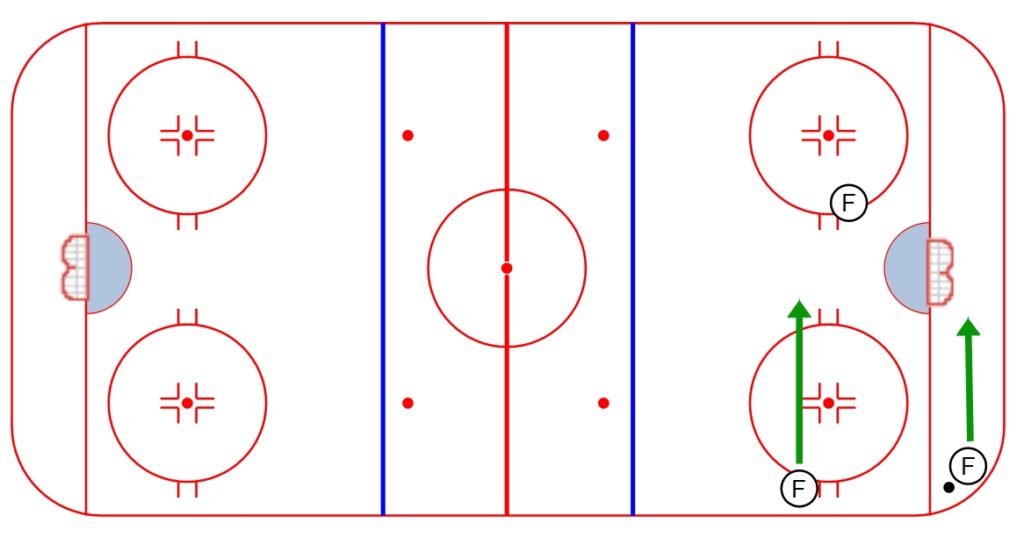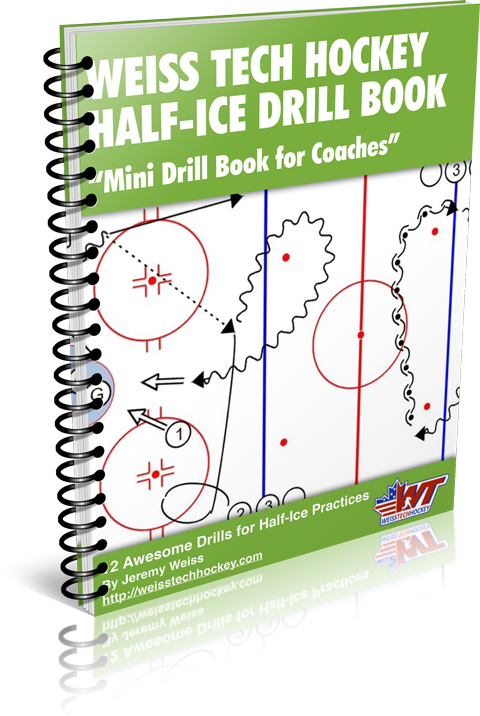As coaches, we often think of offense as what happens on the initial attack. We think in terms of support, creating width and depth, and we try to set up for multiple options. This is all fantastic, and important.
But the initial attack is just the first step.
We also need to consider what happens if the initial attack doesn’t result in a goal. Or, what should our setup look like when we regain possession after the forecheck?
This is where many youth teams get hung up.
Coach wants players attacking the net… right? And we’re supposed to spread out… right? And Coach wants the players to go hard to the puck, even if it ends up in the corner… right?
Because of this, we often see a setup that looks something like this: Two players spread out in front, with the puck carrier in the corner (See diagram).

The problem with this setup is the player in the corner has no “real” passing options. Plus, although the players are spread out in front, the passing lanes are easily covered, sometimes even by just one player.
For this setup to become a scoring possibility, the puck carrier will have to beat the defender on his/her own, then make a play to the front… likely, still at a bad passing angle.
A Quick and Easy Solution
The solution to this problem is simple; we need a second player to support the puck carrier in the corner. This can unfold in a number of different ways, but the ultimate result is that we want one player high, and one player low, attacking the net together (see diagram)

You can see this positional concept in action in this video clip from the Buffalo Sabres training camp a few years ago. Watch the support from the corner.
This structure allows you to isolate the defender, and makes for a lot of additional options.
Play with this concept with your teams, and let me know how it goes in the comments below!
Jeremy






